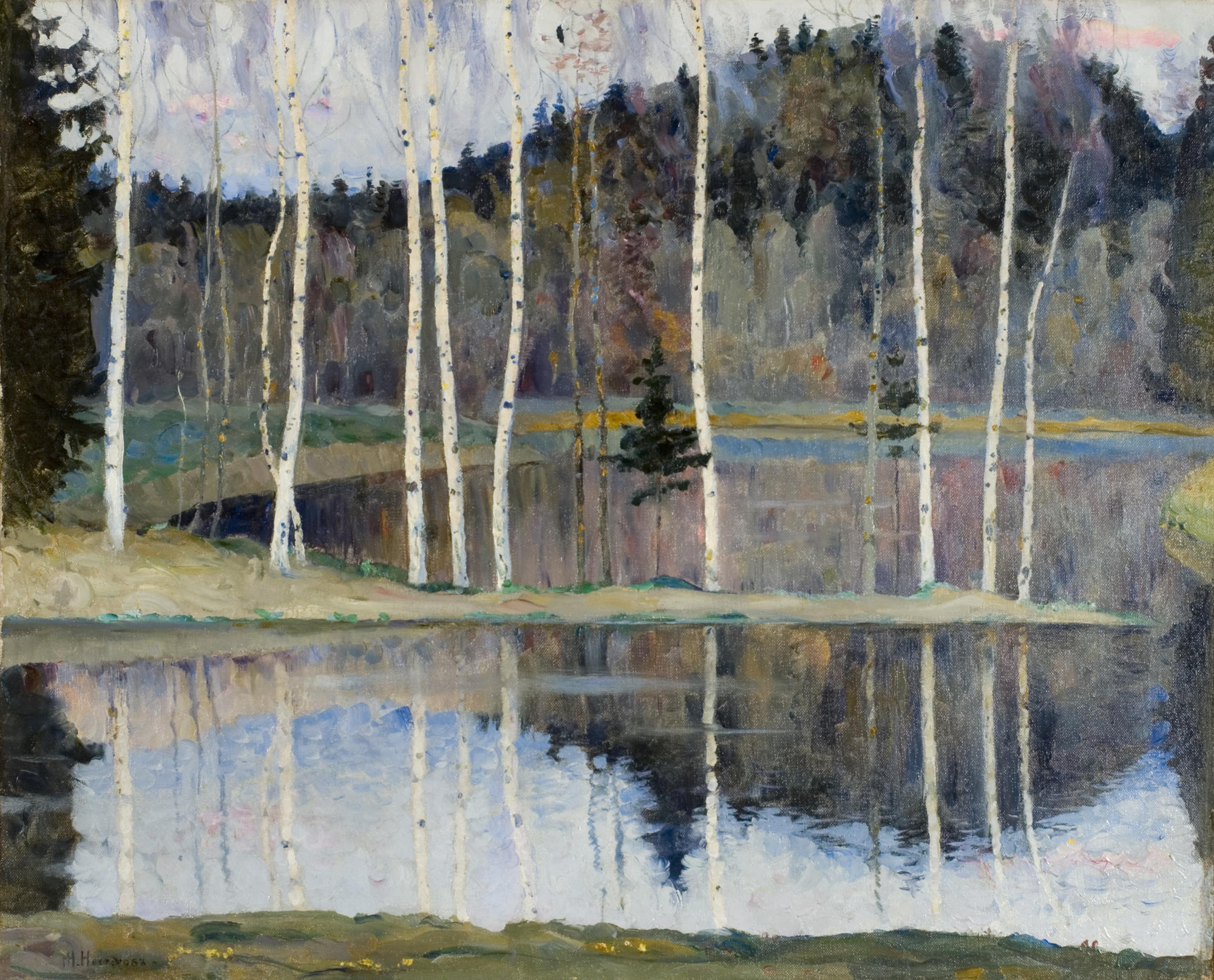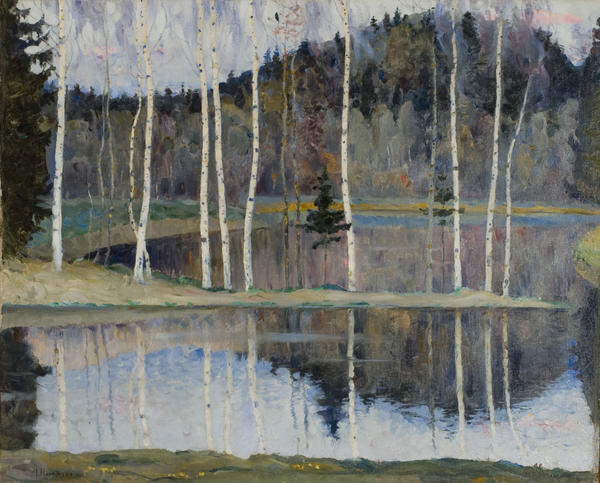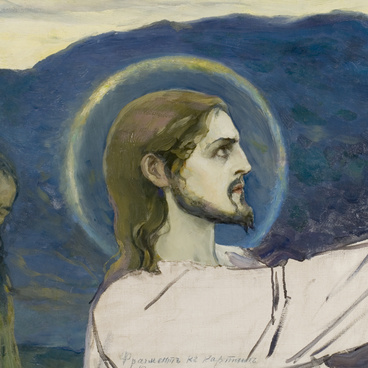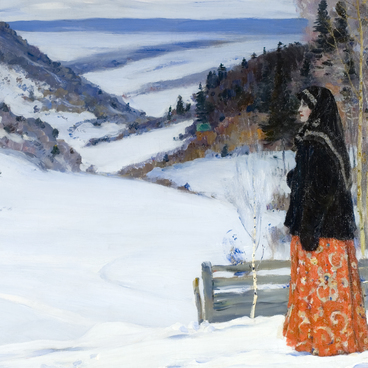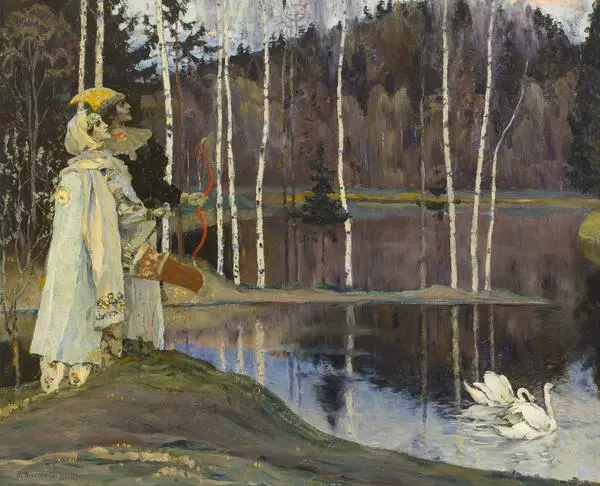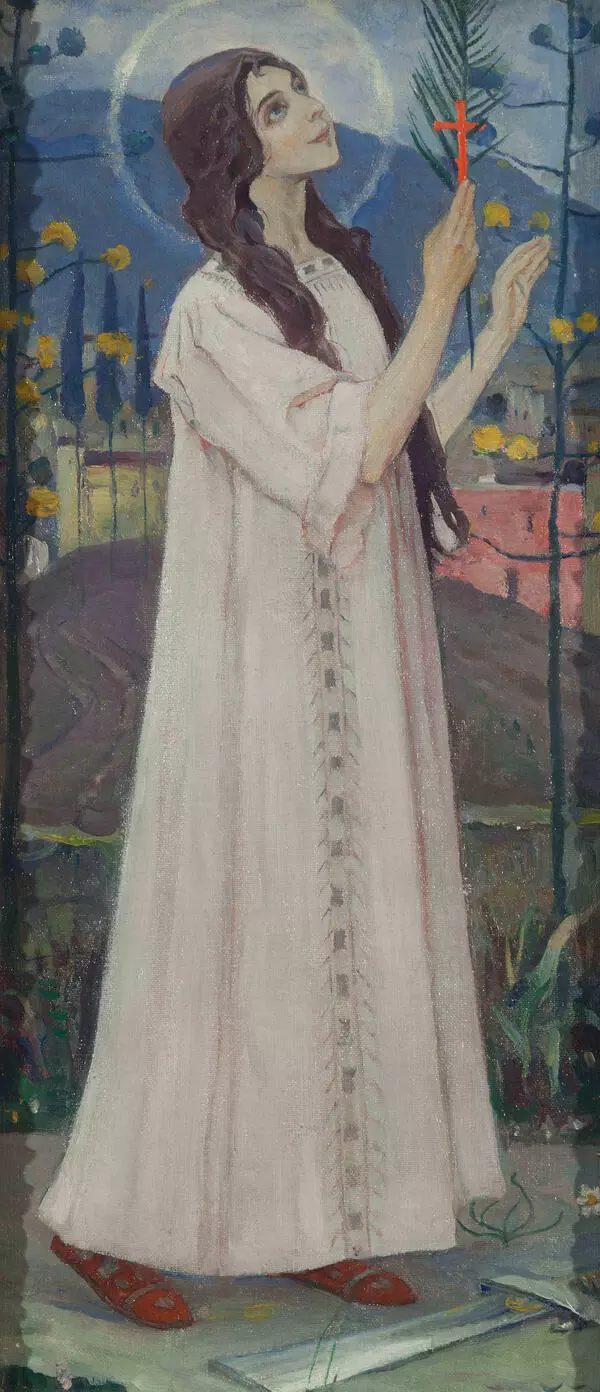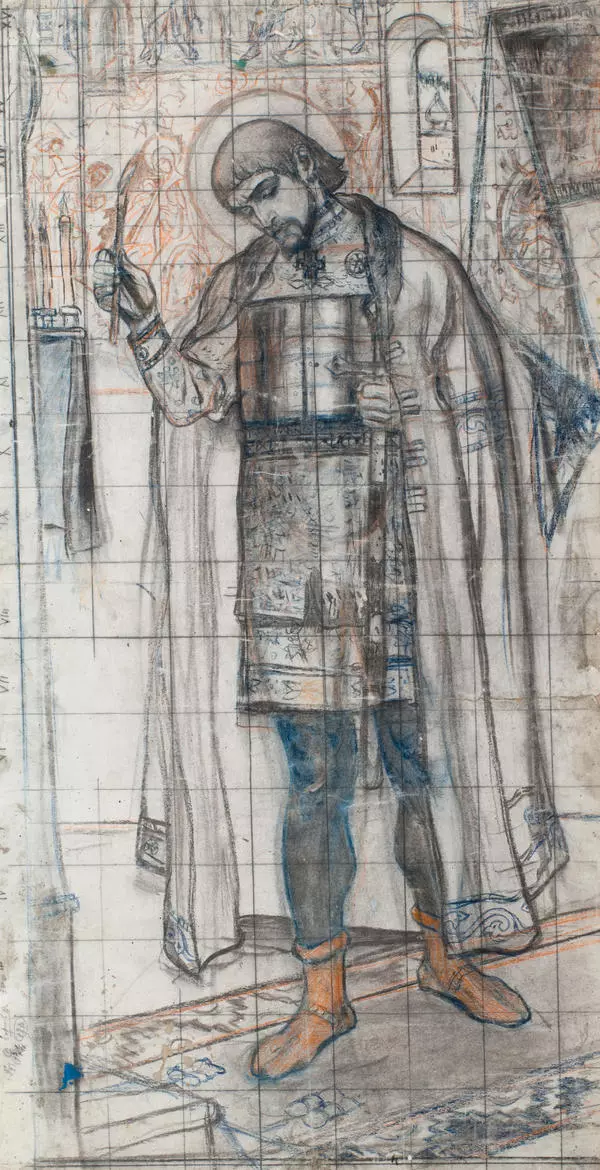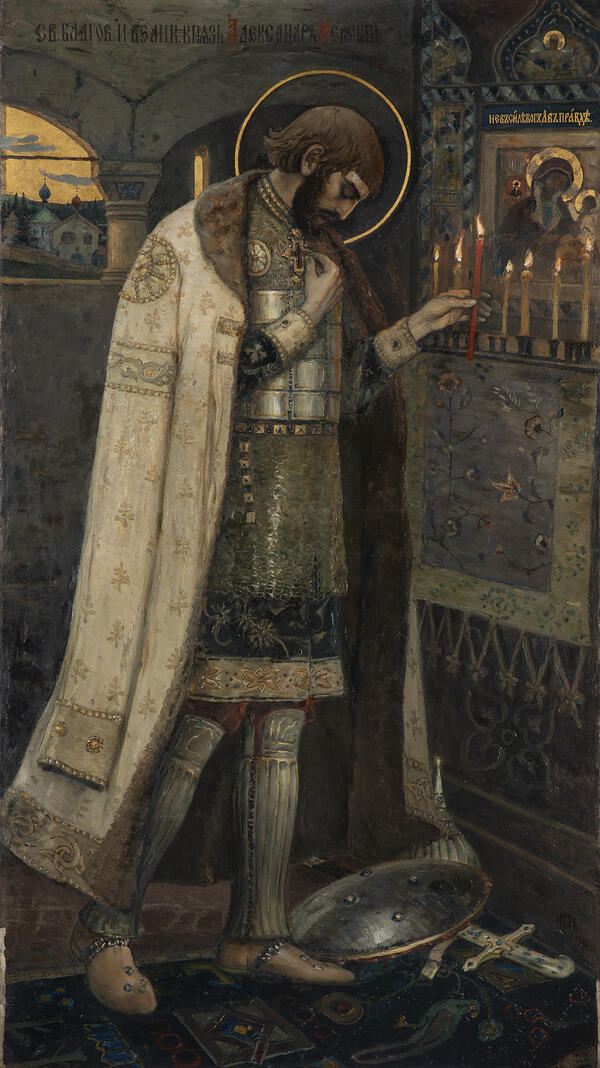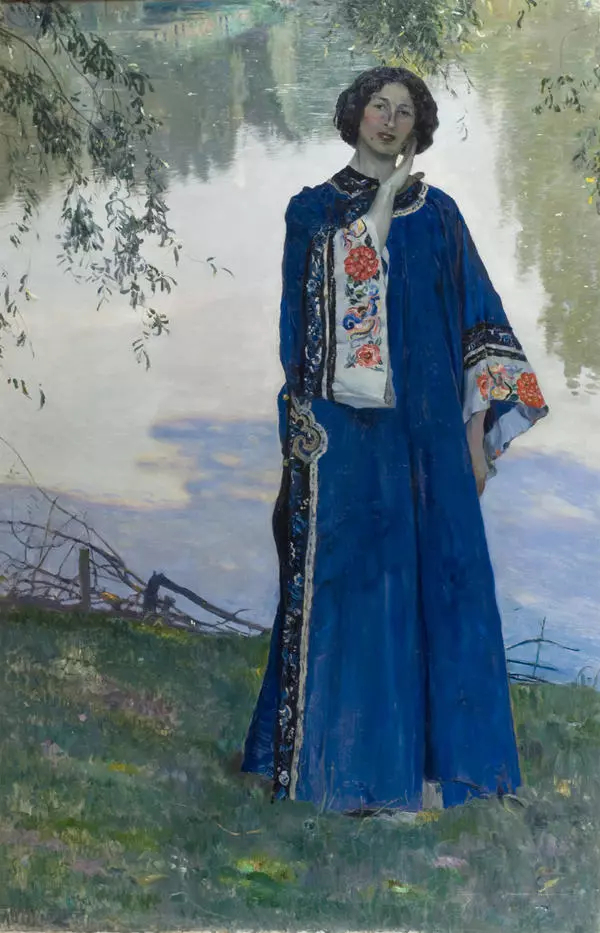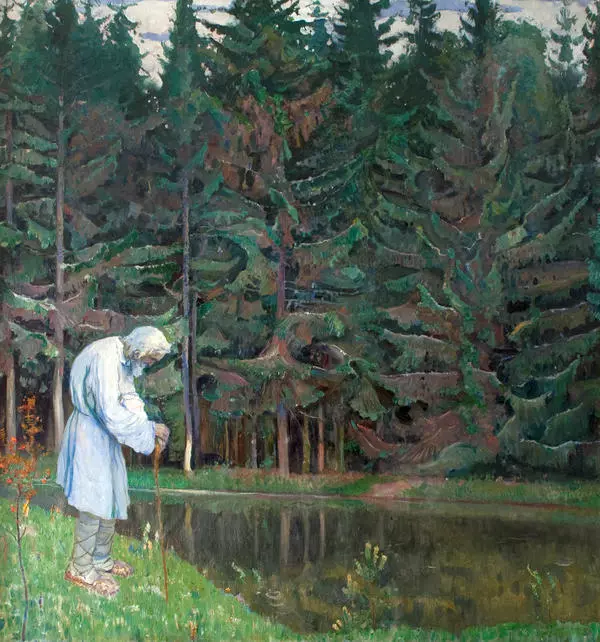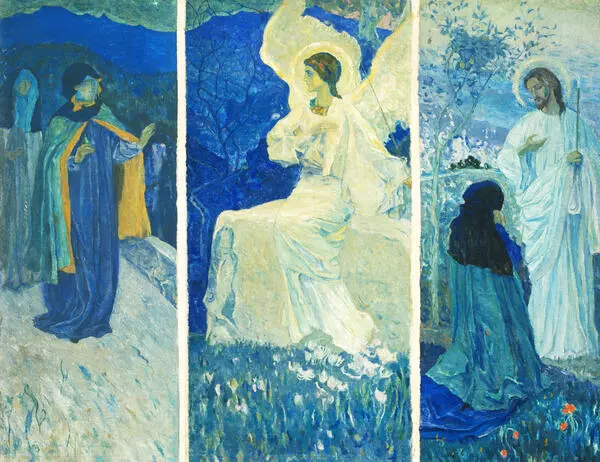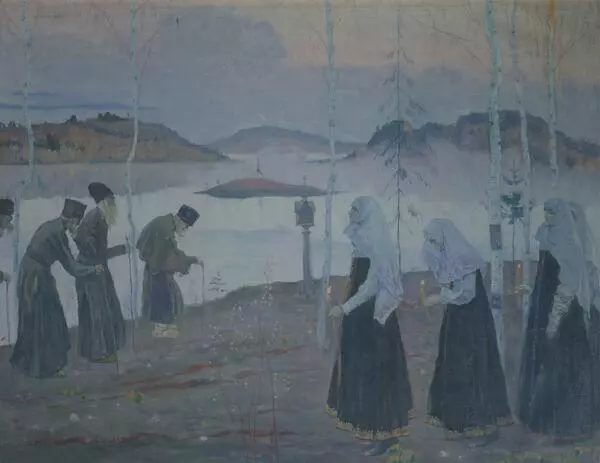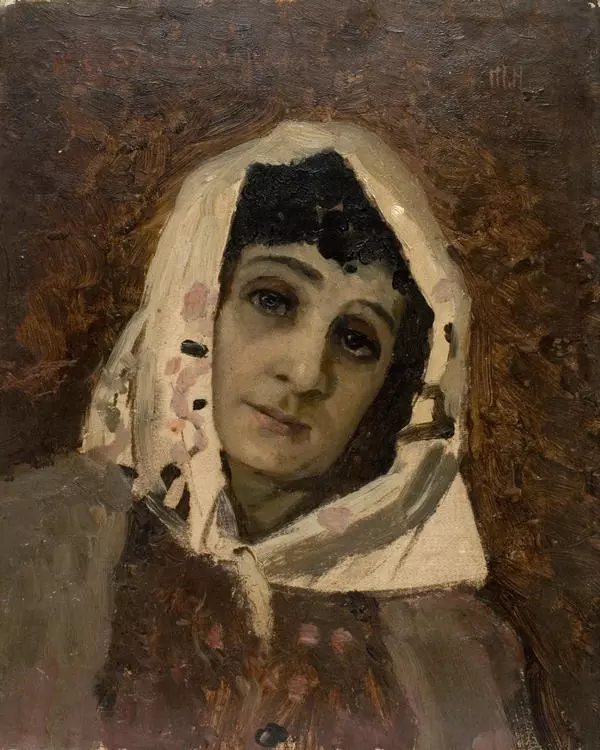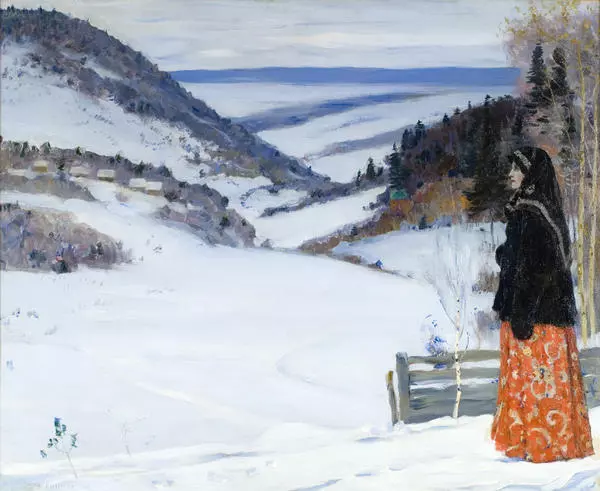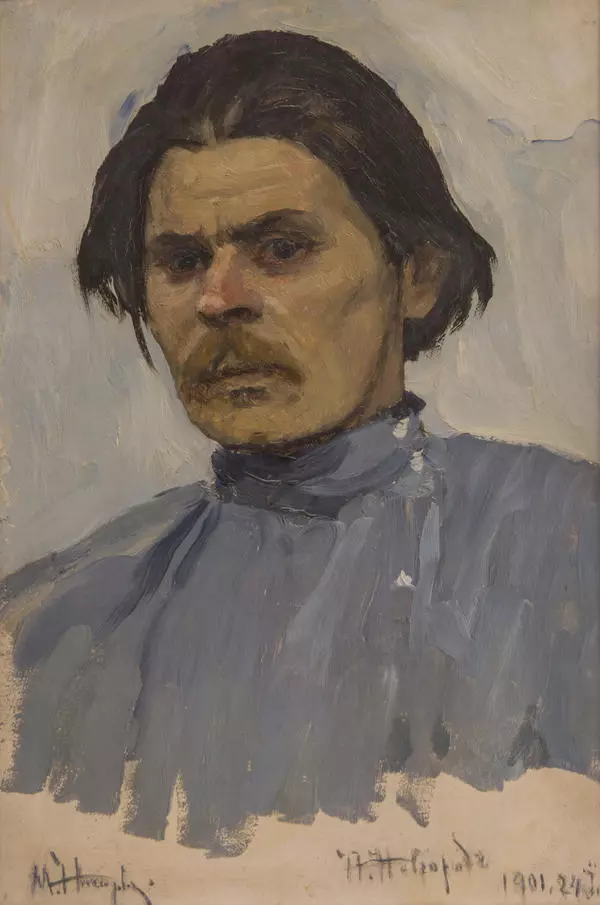The two sketches offered to your attention, the Early Spring and the Head of a Princess perfectly illustrate Nesterov’s poetic style in depicting the man’s oneness with nature, a theme favored by the artist in his crisis years of 1905 through 1907.
In 1905, Mikhail Nesterov made three sketches for his future painting the Two Tunes with the leitmotiv of eternal harmony of the natural environment and wildlife. Another motive favored by the artist is a fairy tale interpreted in his artwork as a symbol of joy and unfading mutual love.
Mikhail Nesterov started work on his poetic painting the Two Tunes in the winter of 1894 in Ufa, as follows from his letter to a friend Apollinary Vasnetsov. In the letter, he mentioned a bitter frost below 20 degrees Centigrade, the pleasure of skiing, and finally, the commencement of work on initial sketches for a ‘landscape with two figures’.
Having completed the three sketches Mikhail Nesterov went on to work on other canvases and put the Two Tunes aside. The artist returned to the Two Tunes 11 years later following a long voyage along the Volga River in the summer of 1905. The artist focused on two canvases: Beyond the Volga dubbed as a major painting of the artist’s “female cycle” and the Two Tunes. The canvas Beyond the Volga is presently on permanent exhibition at the P.M. Dogadin Astrakhan Art Gallery.
Both canvases are about love, but emotionally they are very different: Beyond the Volga is full of drama, while the Two Tunes radiates the happiness of requited love. There are the same two personages in both pictures, but the ambience and the impression they produce are strikingly different. The characters in the Two Tunes are happy and in addition to mutual love, their faces are warmed up by the light of the future, even though the future has a fairy-tale overtone. The awakening nature in the painting symbolizes both the perpetuation of life and the spring of love.
Mikhail Nesterov worked on the Early Spring sketch no less meticulously and painstakingly than on the sketches of the prince and princess. He managed to convey an atmosphere of human harmony with nature, the accord between human moods and surrounding nature. Hence, each of the three sketches could be considered as works of art in their own right.
The Early Spring sketch is associated with the happiness of requited love and perpetuation of life evoking poetic mood and confirming once again that the spring motive was clearly favored by the artist.
Mikhail Nesterov modeled the image of the princess on his second wife Ekaterina Petrovna. The sketch conveys the full power of the artist’s love for the woman who became his ideal of beauty, loyalty and self-sacrifice.
Describing his life journey in his later years, Nesterov wrote that he ‘had refrained from depicting the so-called strong passions in his paintings preferring modest landscapes and persons full of inner spiritual life in the arms of our mother-nature’.
In 1905, Mikhail Nesterov made three sketches for his future painting the Two Tunes with the leitmotiv of eternal harmony of the natural environment and wildlife. Another motive favored by the artist is a fairy tale interpreted in his artwork as a symbol of joy and unfading mutual love.
Mikhail Nesterov started work on his poetic painting the Two Tunes in the winter of 1894 in Ufa, as follows from his letter to a friend Apollinary Vasnetsov. In the letter, he mentioned a bitter frost below 20 degrees Centigrade, the pleasure of skiing, and finally, the commencement of work on initial sketches for a ‘landscape with two figures’.
Having completed the three sketches Mikhail Nesterov went on to work on other canvases and put the Two Tunes aside. The artist returned to the Two Tunes 11 years later following a long voyage along the Volga River in the summer of 1905. The artist focused on two canvases: Beyond the Volga dubbed as a major painting of the artist’s “female cycle” and the Two Tunes. The canvas Beyond the Volga is presently on permanent exhibition at the P.M. Dogadin Astrakhan Art Gallery.
Both canvases are about love, but emotionally they are very different: Beyond the Volga is full of drama, while the Two Tunes radiates the happiness of requited love. There are the same two personages in both pictures, but the ambience and the impression they produce are strikingly different. The characters in the Two Tunes are happy and in addition to mutual love, their faces are warmed up by the light of the future, even though the future has a fairy-tale overtone. The awakening nature in the painting symbolizes both the perpetuation of life and the spring of love.
Mikhail Nesterov worked on the Early Spring sketch no less meticulously and painstakingly than on the sketches of the prince and princess. He managed to convey an atmosphere of human harmony with nature, the accord between human moods and surrounding nature. Hence, each of the three sketches could be considered as works of art in their own right.
The Early Spring sketch is associated with the happiness of requited love and perpetuation of life evoking poetic mood and confirming once again that the spring motive was clearly favored by the artist.
Mikhail Nesterov modeled the image of the princess on his second wife Ekaterina Petrovna. The sketch conveys the full power of the artist’s love for the woman who became his ideal of beauty, loyalty and self-sacrifice.
Describing his life journey in his later years, Nesterov wrote that he ‘had refrained from depicting the so-called strong passions in his paintings preferring modest landscapes and persons full of inner spiritual life in the arms of our mother-nature’.
